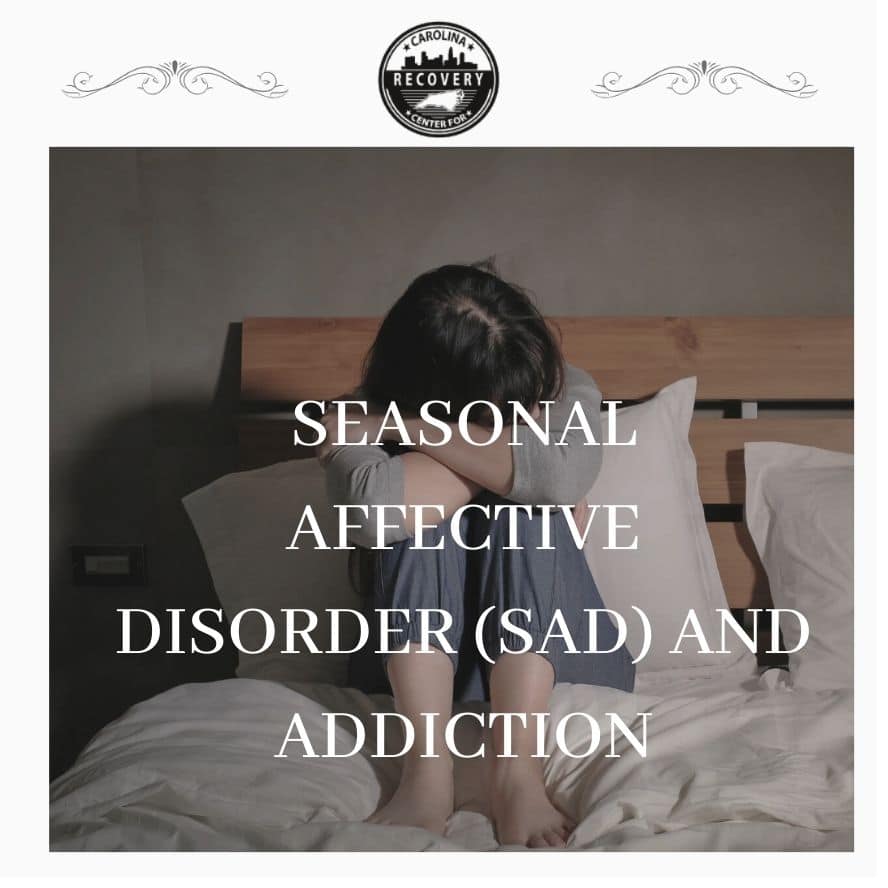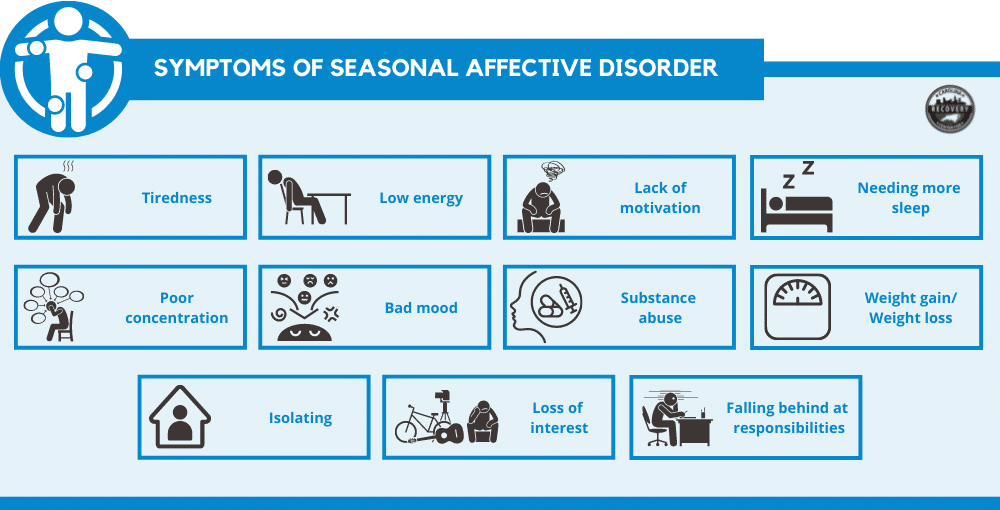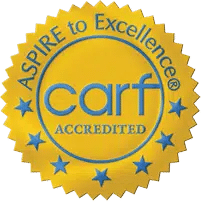Understanding the Link Between Seasonal Affective Disorder (SAD) and Addiction

Medically Verified: 2/1/24
Medical Reviewer
Chief Editor

All of the information on this page has been reviewed and verified by a certified addiction professional.
Addiction is a serious condition that affects millions of people in the United States. Left untreated, addiction can cause serious damage to a person’s health and wellbeing. It can lead to social, financial, and legal problems that take years to repair.
There is no single cause of addiction. It is a complex condition that is caused by many factors. Certain environmental, biological, and psychological characteristics are thought to increase the likelihood that someone will develop substance abuse issues or addiction in their lifetime. Mental health issues like depression, anxiety, and bipolar disorder are thought to lead to or contribute to addiction because many people with these mental health conditions use drugs or alcohol to self-medicate.
One of the most common forms of depression is called Seasonal Affective Disorder (SAD). Many people experience this type of seasonal depression during the long, cold winter months. It is important to understand the link between Seasonal Affective Disorder and addiction so that we can offer effective treatment to people who suffer from both.
Understanding Seasonal Affective Disorder (SAD)

Seasonal Affective Disorder (SAD) is a form of mild, seasonal depression that usually begins in the fall or winter and resolves itself at the beginning of spring. People who experience SAD may begin to feel tired, lethargic, and unmotivated as the days begin to shorten in September and October. Other symptoms include:
- Low energy
- Needing more sleep
- Poor concentration
- Generally bad mood
- Substance abuse
- Weight gain or loss
- Isolating
- Loss of interest in activities
- Falling behind at work, school, or responsibilities at home
Risk factors for developing SAD include:
- Gender–women are more likely to develop SAD than men
- Family history of SAD or depression
- History of mental illness
- Age–younger people are more likely to develop SAD than older adults
- Location–people who live very far north or south of the equator are more likely to develop SAD
While most people who suffer from SAD experience symptoms in the fall and winter, some people develop this condition in the spring and summer. People who experience this type of SAD generally have different symptoms than those who experience SAD in the winter months. Spring or summer Seasonal Affective Disorder usually shows up as an increase in anxiety and decreased appetite. Spring and summer SAD poses the same risk for self-medication and substance abuse, despite being less common.
What is the Link Between Seasonal Affective Disorder and Addiction?
Research has shown a clear link between mental health issues and addiction. More than 20% of people with mental illness struggle with addiction, according to the National Institute of Mental Health.[1] While there is still research to be done about why that link exists, it is thought that self-medication is an important factor when it comes to developing an addiction.
But why is self-medicating so harmful? Self-medication happens when someone uses drugs or alcohol to lessen or numb the symptoms of a mental illness. This could look like someone drinking to reduce their anxiety or numb their depression, or it could be a person using drugs to help them cope with trauma. Self-medication often leads to addiction because the person needs to use more and more of the substance to have the same effect over time.
Left untreated, Seasonal Affective Disorder can cause very uncomfortable symptoms, including changes to a person’s mood, sleep, and appetite. Understandably, people with SAD often look for a way to manage their symptoms. Without getting evidence-based treatment, it is more likely they will turn to drugs or alcohol to help them cope with their depression.
How to Effectively Cope with SAD and Substance Abuse
Any time someone suffers from both a mental health condition and a substance use disorder, it is crucial to treat both conditions simultaneously. If you leave the addiction untreated, the person’s substance abuse is likely to interfere with their ability to engage with their mental health treatments. If they treat only their substance use disorder, their mental illness will likely cause them to relapse. This is true in the case of Seasonal Affective Disorder and addiction.
Effective treatments for Seasonal Affective Disorder include:[2]
- Light therapy
- Medications
- Therapy–group and individual
- Support
- Education
- Lifestyle changes
Substance abuse treatment generally includes:
- Medically supervised detox, if necessary
- Medications and medical care
- Therapy–group and individual
- Support
- Education
- Aftercare–including lifelong engagement in recovery
The treatment for Seasonal Affective Disorder can usually be incorporated seamlessly into a dual diagnosis addiction treatment plan. This allows people to get the treatment they need for both conditions at the same time, which gives them the best chance of having a full recovery from both.
Learn More About SAD and Substance Abuse Treatment at the Carolina Center for Recovery
If you or someone you love need substance abuse treatment or support at any stage of your recovery from Seasonal Affective Disorder and addiction, please reach out to the Carolina Center for Recovery. We offer a range of programs that help people get the skills they need to live a fulfilling, healthy life free from addiction.
Don’t wait another day for the treatment you need and deserve. Call today to speak to one of our admissions counselors.
References:

